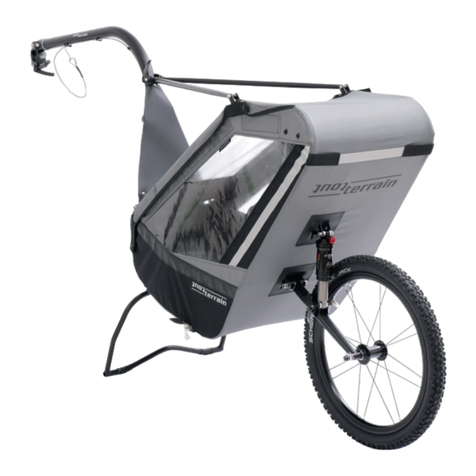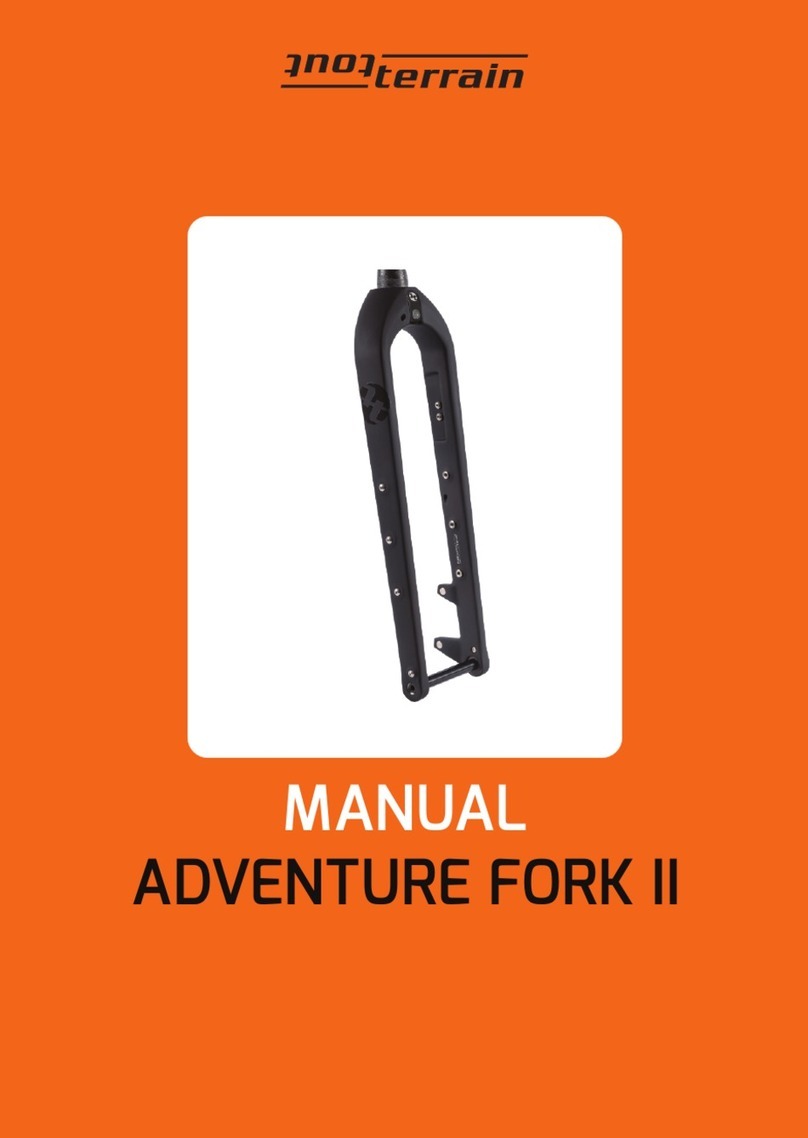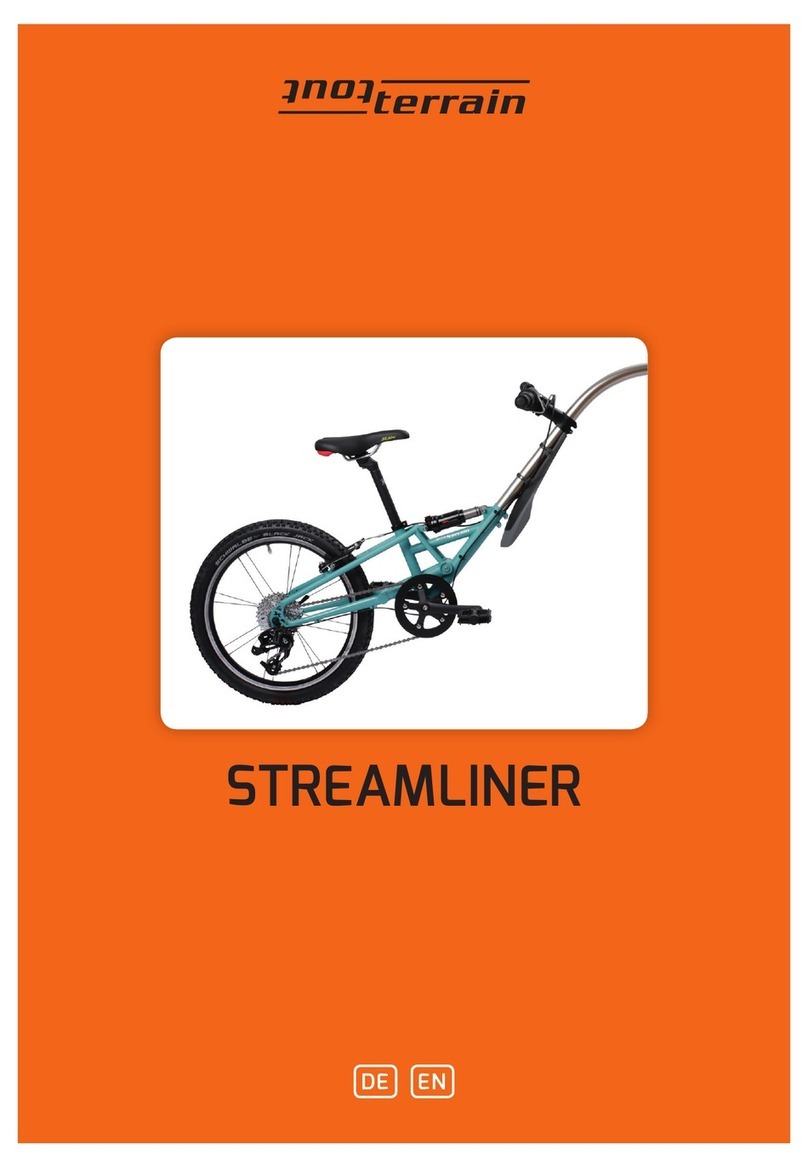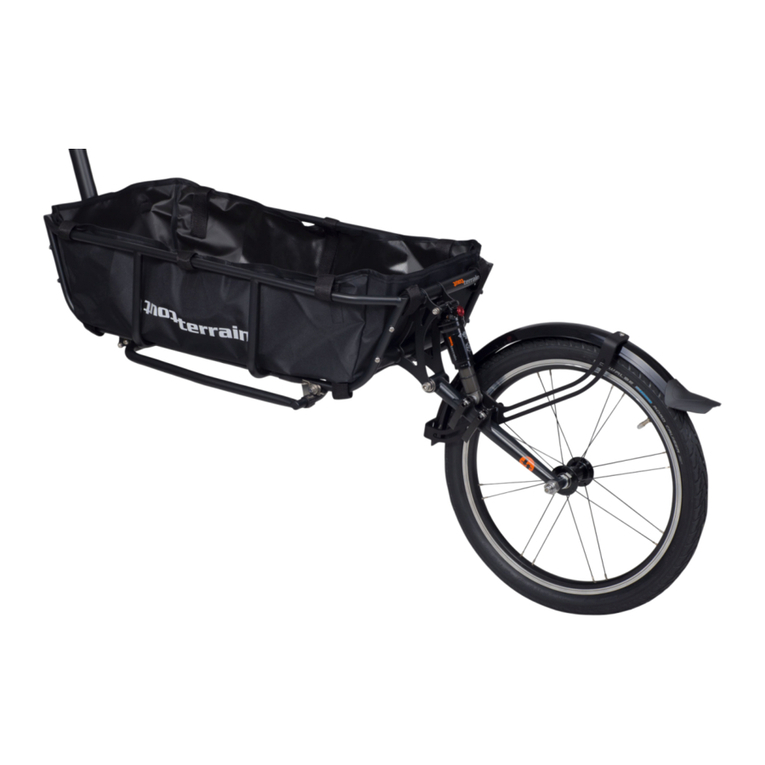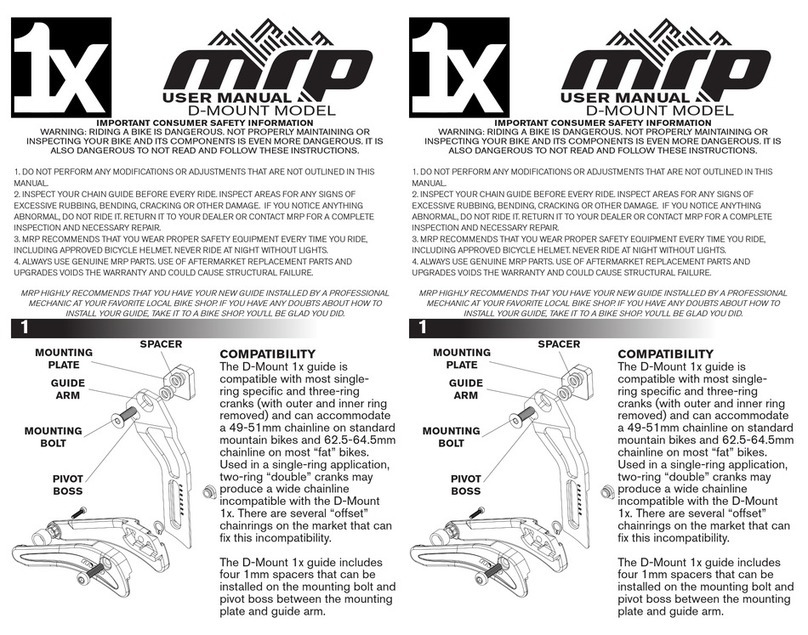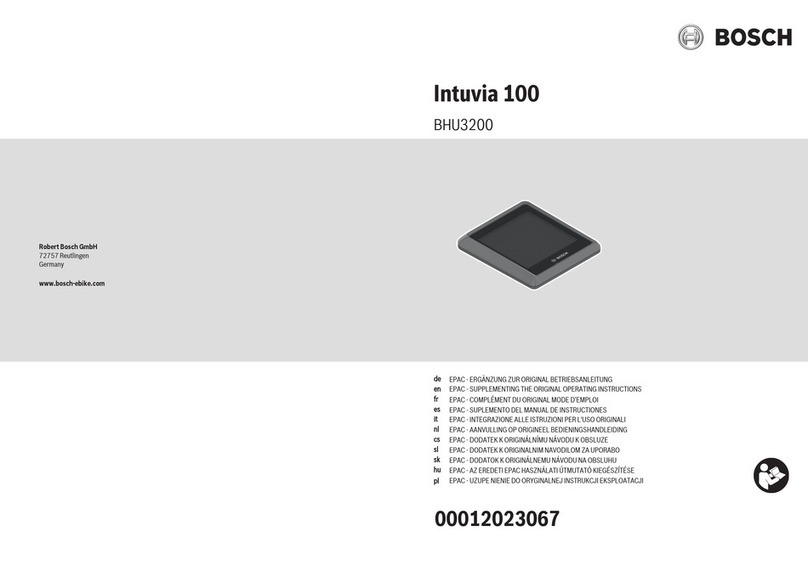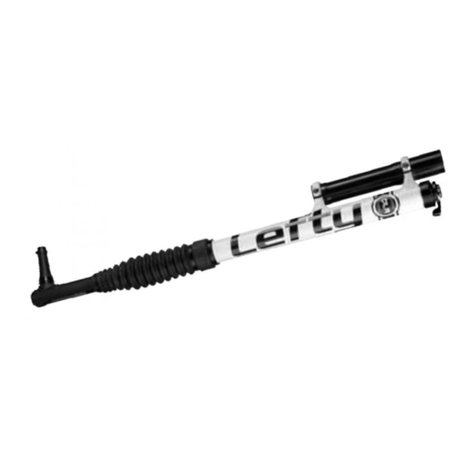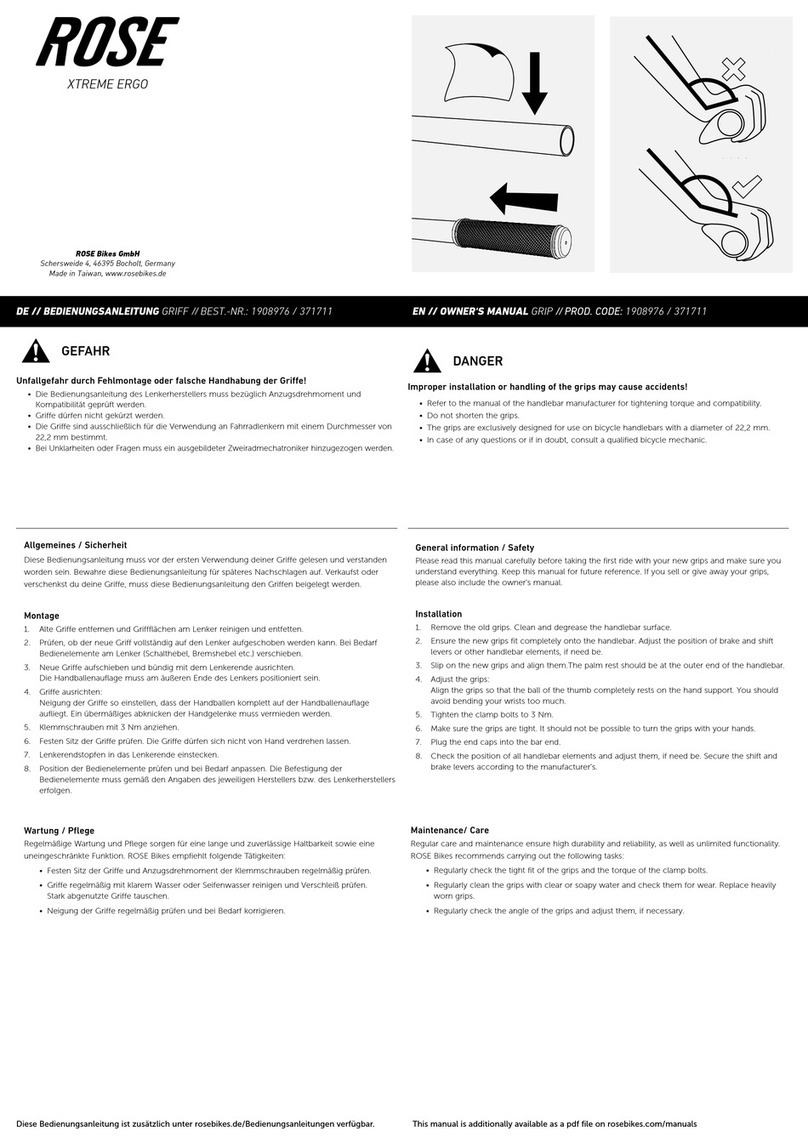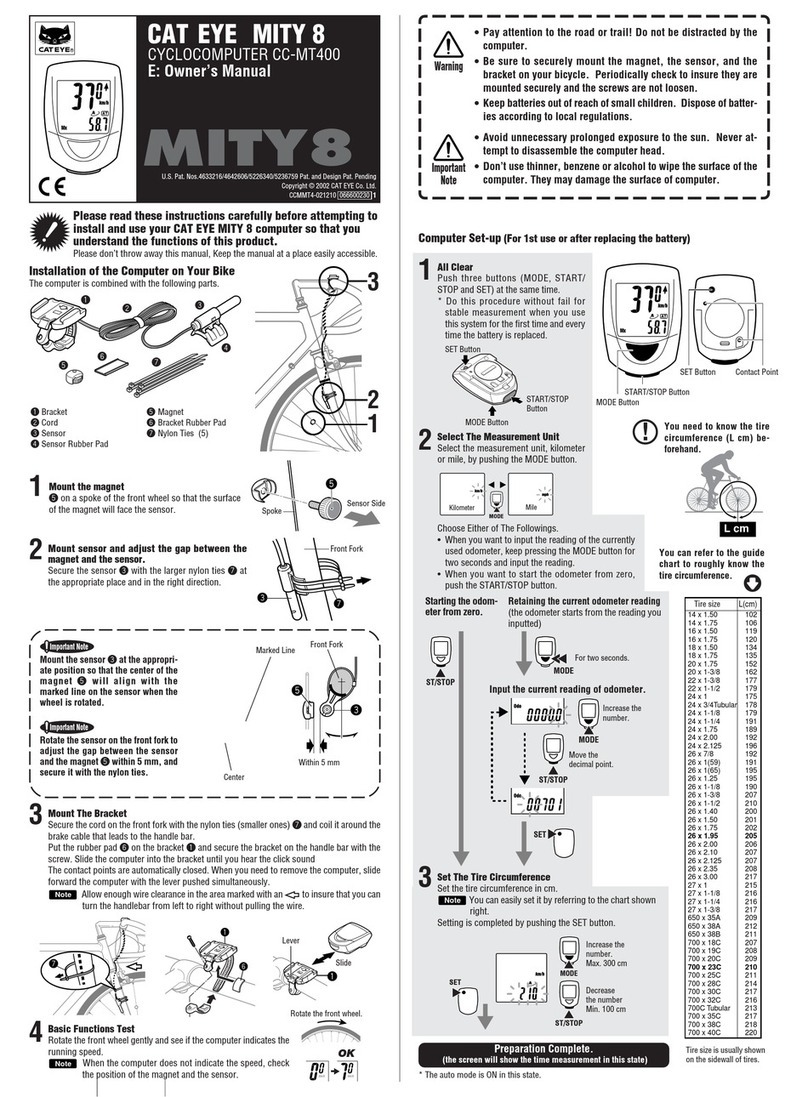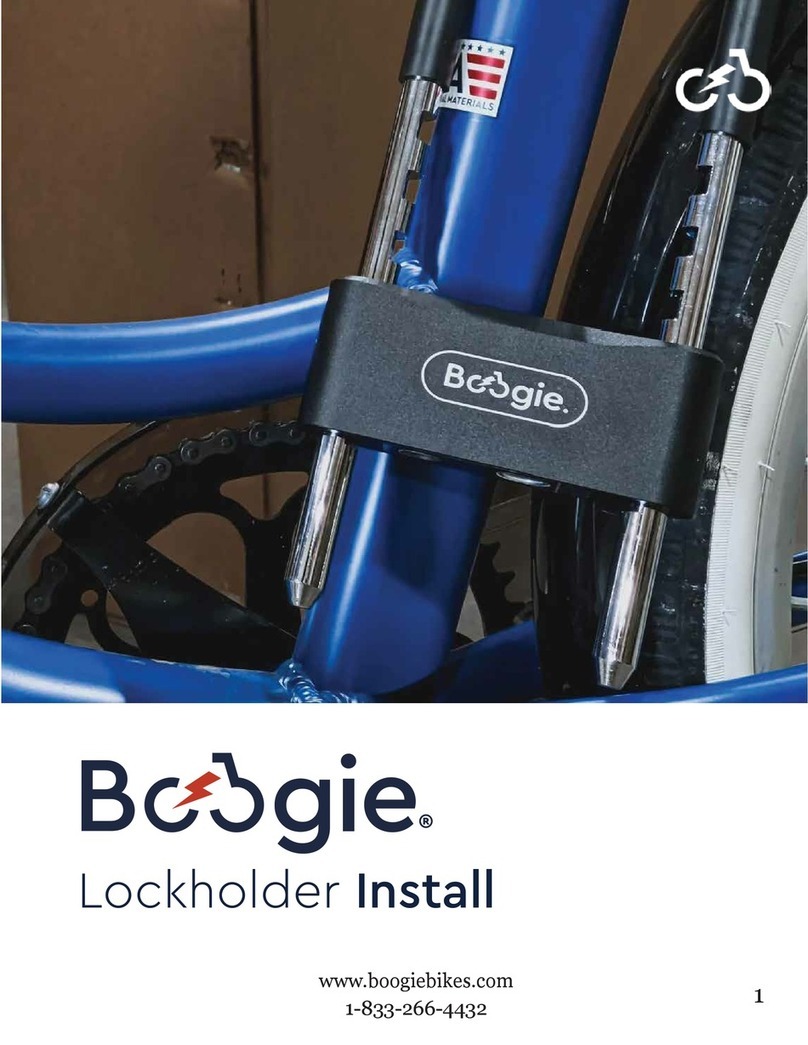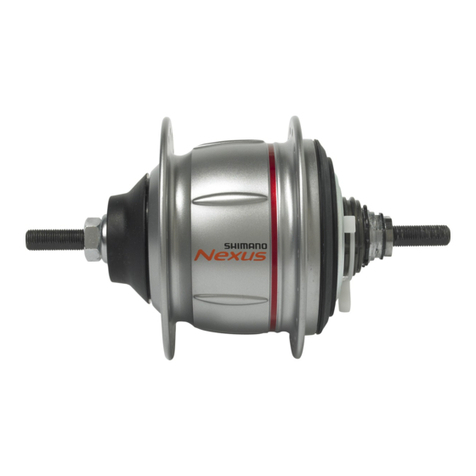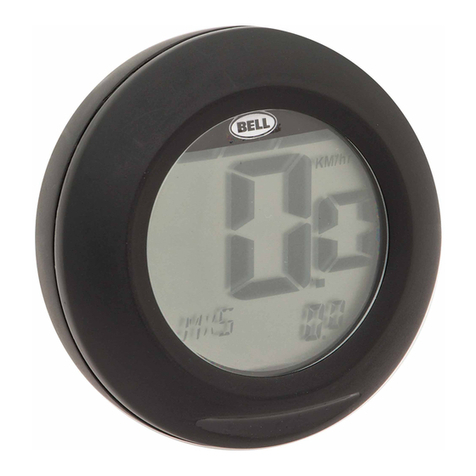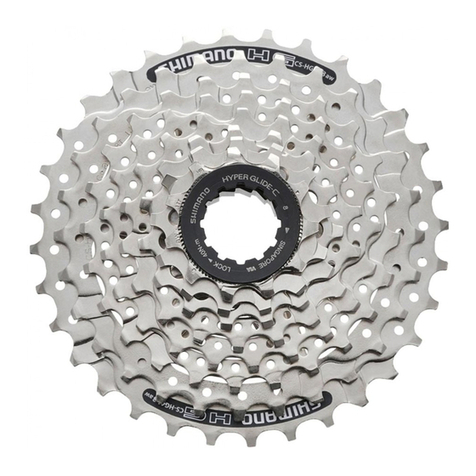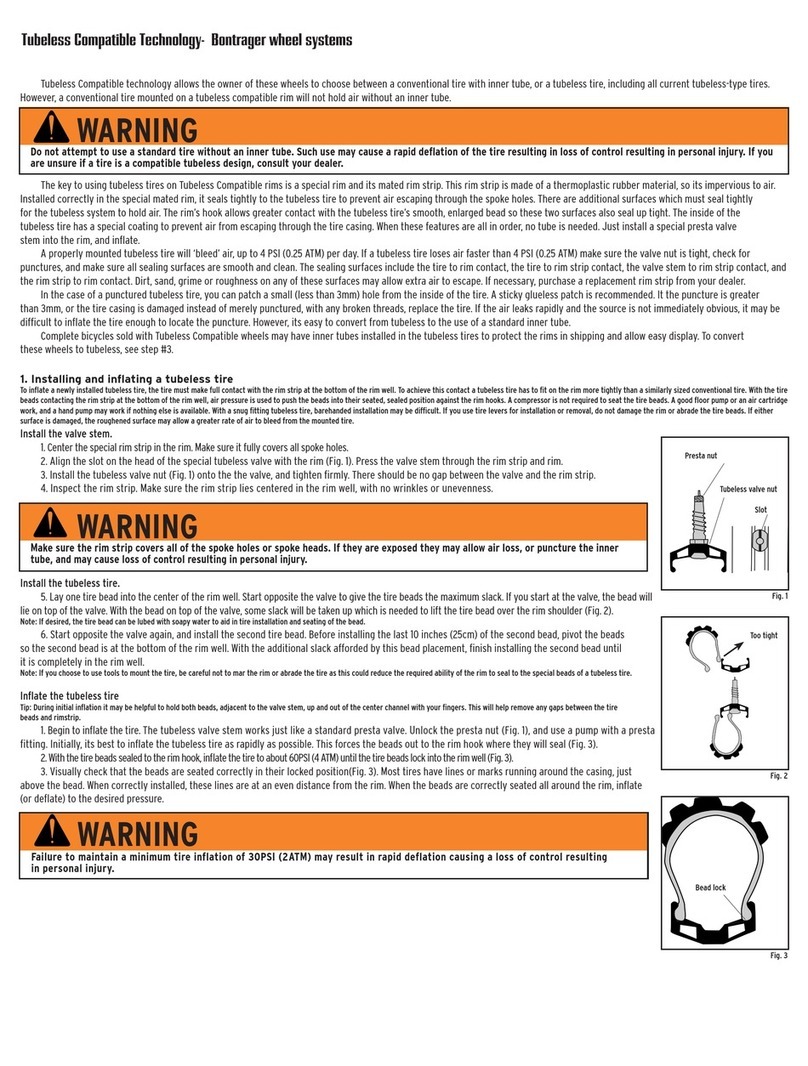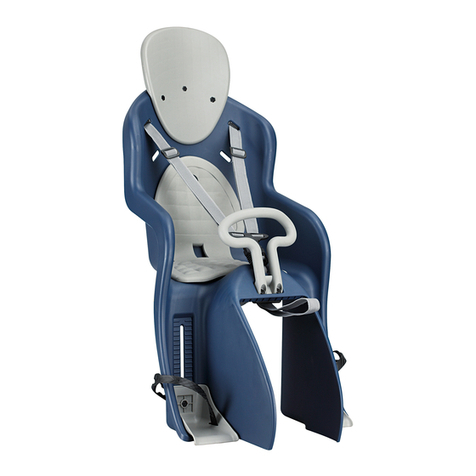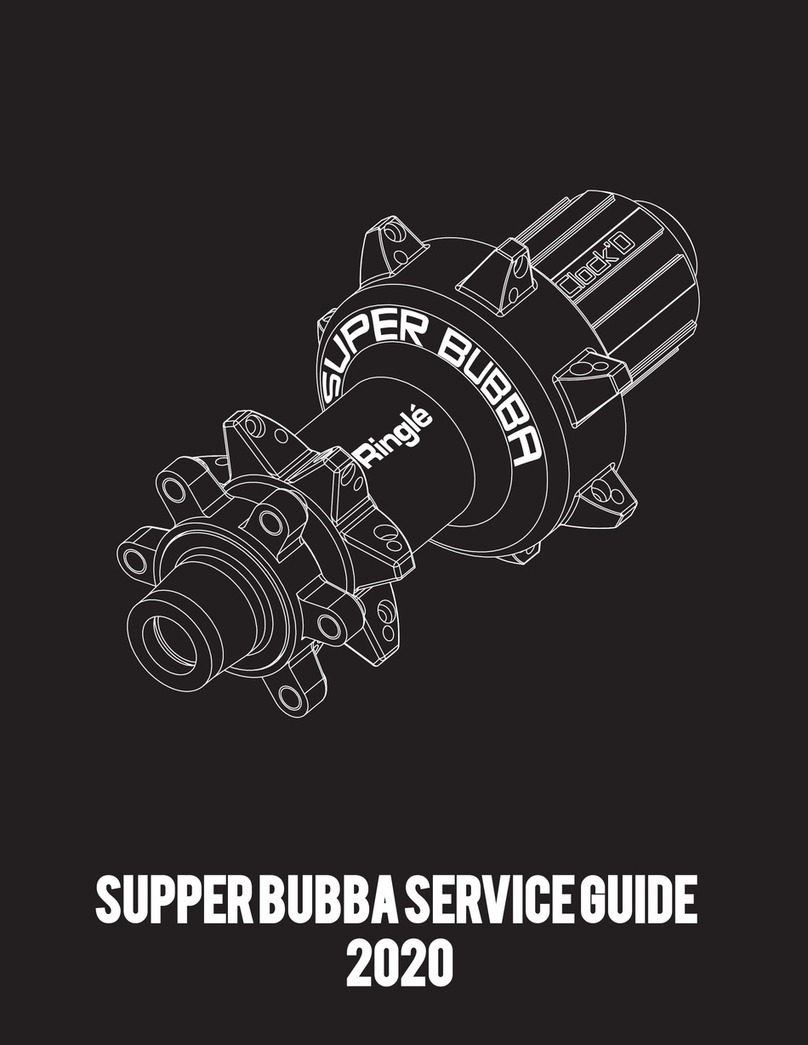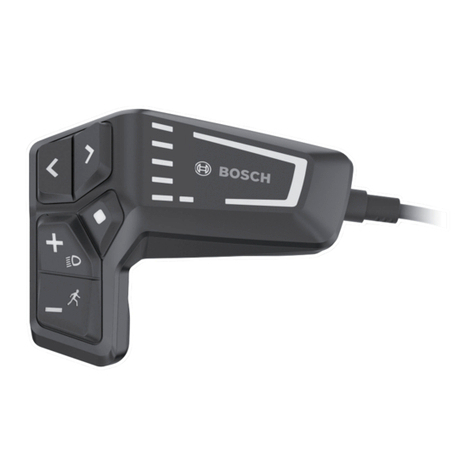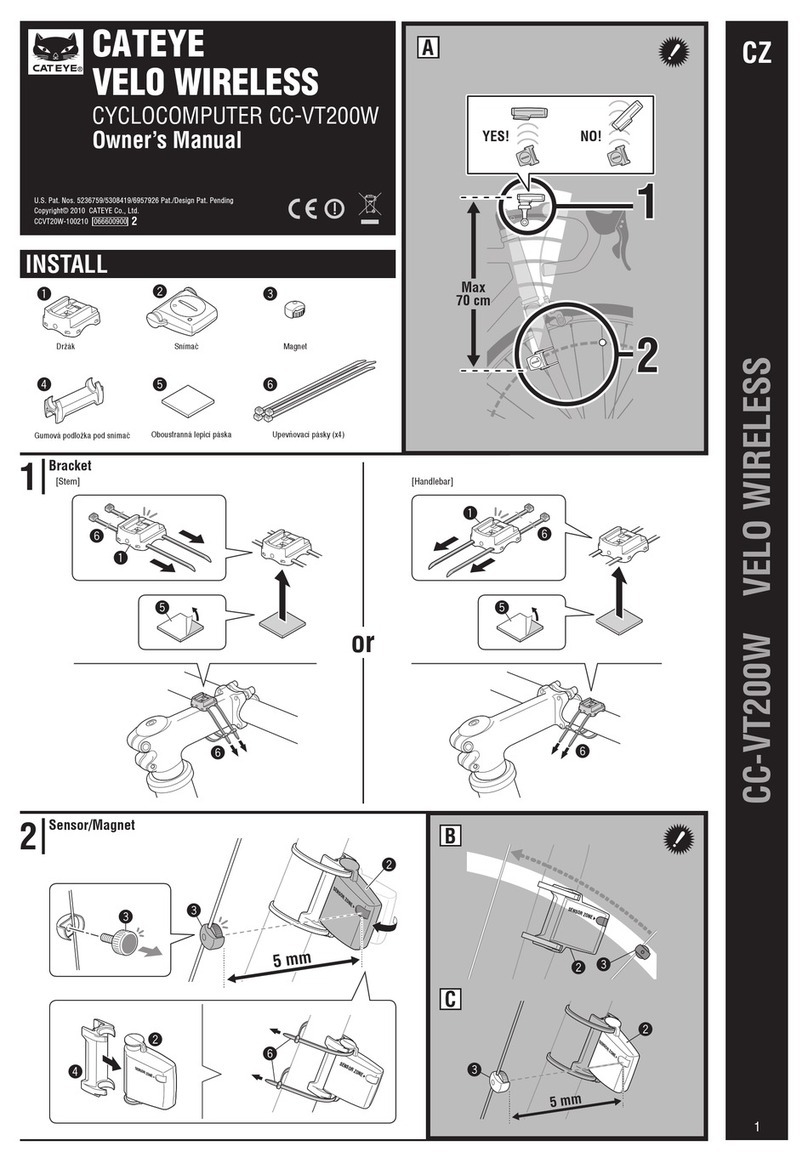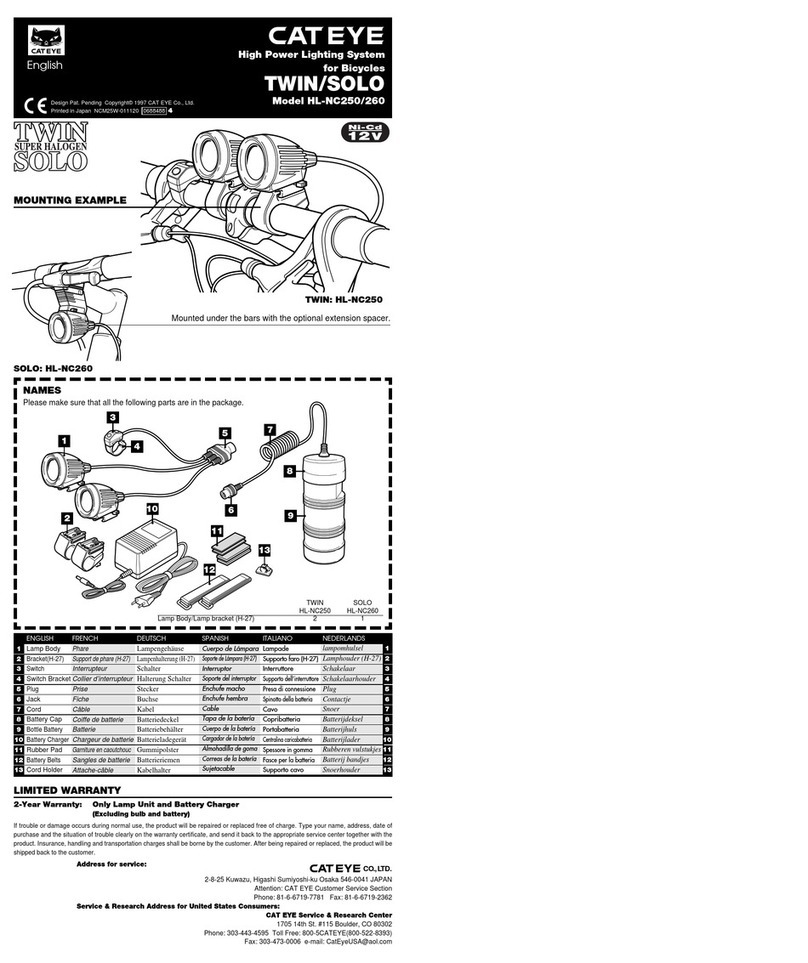Tout Terrain Mule User manual

mule
enDe

2
Lieber Kunde, vielen Dank, dass du dich für den Mule entschieden
hast. Wir fertigen diesen nach höchstem Qualitätsstandard, und
hoffen, dir damit ein Produkt zu liefern, das dir lange viel Freude
bereitet. Wir wünschen viel Spass mit dem Mule.
De
ZUBEHÖR
Kupplung (26,8/27/27,2/30/30,9/31,4/31,6/35)
Schutzblech
Innentasche
Regenüberzug für Innentasche
Tout Terrain Duffle Bag 90L by Ortlieb
Schnellverschluss-Splint für Kupplung
Strassenlaufrad
ERSATZTEILE AUSZUG
Standard Splint für Kupplung
Ständerhaken
Ständer
Achsabdeckung
For English instructions see page 7.
Vor Inbetriebnahme 3
Montage / Inbetriebnahme 3
Betrieb 5
Abstimmen der Federung 5
Anbau des Schutzblechs 5
Ständermontage 6
Wartung 6

3
2. Das Hinterrad wird mit der Schnellverschluss
Steckachse in die Schwinge eingebaut, wie
nachfolgend dargestellt (a). Anschliessend
wir die Nabe mit der Gummiabdeckung
wieder verschlossen (b).
VOR INBETRIEBNAHME
Wichtig: Der Mule ist für den Einsatz im
Gelände konzipiert. Der Betrieb mit diesem
erfordert vom Radfahrer eine gewisse
Erfahrung und Sicherheit beim Radfahren.
Folgende Punkte solltest du vor der
ersten Benutzung beachten:
• Anfänger sollten den Betrieb des
Anhängers im Gelände meiden.
• Die Reaktionsmöglichkeiten mit Anhänger
sind eingeschränkt und das Bremsverhalten
ist deutlich reduziert gegenüber der Fahrt
ohne Anhänger.
MONTAGE / INBETRIEBNAHME
Wichtig: Fahre niemals, ohne die
Prüfungen in 1-5 durchgeführt zu haben.
1. Das Federelement wird in die entsprechen-
den Aufnahmen an der Schwinge einge-
hängt. Hierfür gibt es zwei Positionen. Für
den Betrieb auf Strassen kann man die Posi-
tion 1 wählen, in dieser Position hat der
Anhänger 12 cm Federweg, und der Schwer-
punkt liegt etwas tiefer. In der Position 2
hat der Anhänger 16 cm Federweg, und der
Schwerpunkt liegt etwas höher. Für Fahrten
im Gelände ist diese Position zu bevorzugen.
Der Schnellspanner muss immer sorgfältig
verschlossen werden!
Pos. 2
Pos. 1
a)
b)

4
Achtung: Stelle sicher, dass das Rad
vollständig eingerastet ist. Dies erkennst
du daran, dass der Stift komplett in der
Steckachse verschwindet.
3. Beachte bei der Montage der Deichsel, dass
bei jeder Montage die Deichsel voll überlap-
pend im Rahmen steckt und der Sicherungs-
splint eingeführt ist. Nach dem Ausrichten
der Deichsel im Rahmen, ziehe die Schrau-
ben mit einem Drehmoment von 9 Nm an!
4. Ziehe die Sattelstütze aus dem Zugfahrrad
heraus. Das Kupplungsstück an der Sattel-
stütze über die Sattelstütze stecken. Der
Durchmesser der Kupplungsschelle muss
genau mit dem der Sattelstütze übereinstim-
men. Die Schelle darf auf der Stütze kein
Spiel haben. Sie darf allerdings auch nicht
weiter als 1 mm aufgebogen werden, um die
Montage zu erleichtern. Dann schiebe die
Stütze wieder in das Fahrrad und positionie-
ren das Kupplungsteil so knapp wie möglich
über dem Rahmen, allerdings so, dass du
bei Bedarf im Gelände die Sattelstütze noch
um einige Zentimeter absenken kannst.
Das Kupplungsrohr muss gerade nach
hinten zeigen, dann ziehe die Schraube mit
einem 5 mm Inbus fest. Das Anzugsmoment
der Schraube darf 9 Nm nicht überschreiten.
Achtung: Montiere den Anhänger nicht
an Carbon- oder anderen extremen Leichtbau-
sattelstützen. Bei absenkbaren Sattelstützen
sowie gefederten Teleskopstützen beachte
bitte die Hinweise der jeweiligen Hersteller!
5. Ankuppeln: Dazu muss der Schnellspanner
der Kupplung offen stehen und die Kupp-
lungsteile müssen schmutzfrei sein. Das
Kupplungsgelenk wird über das Kupplungs-
rohr geschoben, bis es ganz auf diesem
steckt (die Schnellspannschelle berührt nun
fast die Sattelstützenschelle). Am einfachs-
ten geht das, wenn der Anhänger auf seinem
Ständer steht und das Fahrrad mit der einen
Hand an die Kupplung geführt wird, während
man mit der anderen Hand die Kupplung
auf das Fahrrad ausrichtet. Achte darauf,
dass der Anhänger genau in der Flucht hinter
dem Fahrrad hängt. Gehe nun wie folgt vor:
a) Stecke immer den Sicherungsbolzen
durch die Kupplung.
b) Der Schnellspanner muss fest sitzen
und sorgfältig geschlossen werden.
a)
b)

5
BETRIEB
• Das zulässige Gesamtgewicht beträgt 45 kg.
• Die maximale Zuladung beträgt 38 kg.
• Sichere deine Ihre Ladung sorgfältig.
• Beachte, dass die Schnellspanner geschlos-
sen sind und das Laufrad eingerastet ist.
ABSTIMMEN DER FEDERUNG
In der Luftkammer muss je nach Zuladung ein
unterschiedlicher Luftdruck eingestellt werden.
Die Dämpfung sollte immer möglichst schwach
eingestellt sein, so dass das Federelement
schnell ausfedert, aber ohne beim Ausfedern
durchzuschlagen. Wenn du den Federweg
verstellst (Strassen oder Gelände-Position),
beachte, dass evtl. auch der Luftdruck und
die Dämpfung angepasst werden müssen.
Lese hierzu auch die separate Anleitung für
das Federelement.
Bitte beachte auch, dass das Federelement
je nach Bodenbeschaffenheit angepasst
werden kann.
Tipp: Eine separate Anleitung des Dämpfers
mit detaillierten Informationen gibt es als
Download für dein Produkt unter: https://
tout-terrain.de/de/die-produkte/anhaenger/
ANBAU DES SCHUTZBLECHS
Wichtig: Das Schutzblech kann ohne
Werkzeug montiert werden. Bitte prüfe vor
jeder Fahrt den Sitz der Schnellspanner.
Zur Vereinfachung der Montage kann das
Laufrad entfernt werden. Folgende Montage-
schritte sind durchzuführen:
• Löse die Mutter des Dämpfer Schnell-
spanners und montiere den Halter auf
die Achse des Schnellspanners zwischen
Schwinge und Mutter.
• Montage des zusätzlichen Schnellspanners
mit Hülse: Montiere den mitgelieferten
Schnellspanner in dem noch freien Schlitz
der Schwinge und dem freien Loch des
Halters. Die Hülse dient als Abstandshalter
im freien Schlitz der Schwinge.
• Wenn du die Dämpferposition änderst, tau-
sche die Hülse mit dem Dämpfer. Die Posi-
tion des Schutzblechs bleibt unverändert.
Tipp: Mit dem Langloch kannst du die Position
für diverse Reifenbreiten anpassen.

6
STÄNDERMONTAGE
(falls nicht vormontiert)
• Entferne die vormontierten Hülsen mit
einem Inbus- sowie einem Gabelschlüssel
• Positioniere den Ständer und die mitgeliefer-
ten Hülsen wie abgebildet. Ziehe die
Schrauben so fest, dass sich der Ständer
noch drehen lässt.
• Montiere den Ständerhaken mit der Öffnung
nach hinten in die beiden Gewindebuchsen
auf der Unterseite des Anhängers (a). Ver-
wende nach Möglichkeit etwas Schrauben-
sicherung (z.B. Loctite).
Stelle sicher, dass der Ständerhaken beim
Hochklappen des Ständers einrastet (b).
Achtung: Prüfe vor jeder Fahrt, dass
der Ständer vollständig eingehakt ist.
WARTUNG
Überprüfe die Verschleissteile in regelmäßigen
Abständen bzw. lasse gegebenenfalls War-
tungsarbeiten von deinem Händler durchfüh-
ren. Regelmäßige Wartungsintervalle können
nur schwer angegeben werden, da der Ver-
schleiß stark von Einsatzhäufigkeit und -gelän-
de abhängt.
Teile, die vor jeder Fahrt auf Verschleiß und
Funktion überprüft werden sollten:
• Reifenprofiltiefe
• Luftdruck des Reifens
• Speichenspannung und Rundlauf des Rades
• Funktionsfähigkeit des Federelements
• Fester Sitz des Rades
• Stelle sicher, dass das Spiel des Hinterrades
mit der Schraubenmutter korrekt eingestellt
ist. Gegebenenfalls mit 11 mm und 19 mm
Maulschlüssel die Sicherungsmutter nach-
stellen.
Bitte registriere dein Produkt unter
www.tout-terrain.de.
Dies dient der Garantieerfassung
und damit deiner Sicherheit.
b)
a)

7
Dear customer, thank you for purchasing our Mule trailer.
Our goal is to manufacture our products to the absolute highest
standards. We hope to deliver a product which will provide
long-lasting enjoyment. We wish you lots of fun with Mule!
en
SPARE PARTS SELECTION
Standard pin for hitch
Kickstand hook
Kickstand
Axle cover
ACCESSORIES
Hitch (26,8/27/27,2/30/30,9/31,4/31,6/35)
Mudguard
Liner
Raincover for inside bag
Tout Terrain duffle bag 90L by Ortlieb
Quick release spline for hitch
Road wheel
Before startup 8
Assembly / Startup 8
Operation 10
Tuning the suspension 10
Attaching the fender 10
Kickstand assembly 11
Maintenance 11

8
2. The rear wheel is fitted with the quick-re-
lease quick-release axle which is attached to
the swingarm as shown below (a). Once the
wheel is mounted, affix the rubber hub and
axle cover to protect the components (b).
BEFORE STARTUP
Important: the Mule is designed for cycling
and rough terrain. Using it requires a certain
degree of experience and confidence cycling
in these conditions.
You should take the following points into
consideration before using the trailer.
• Beginners should avoid using the trailer
off-road.
• Riding with a trailer alters the handling of
the bicycle, and the braking effectiveness is
reduced considerably compared to riding
without a trailer. Breaking distance is also
increased compared to riding without a trail-
er attached.
ASSEMBLY / STARTUP
Important: Never ride without having
checked points 1 – 2 below.
1. The shock is mounted in the appropriate
position at the swingarm. There are two
possible positions: for road riding select
position 1, in this position the trailer has
12 cm suspension travel, and the center of
gravity is lower. Position 2 provides 16 cm
of travel, and the center of gravity is slightly
higher. For off-road trips this position is
preferable. The quick-release must always
be tightened securely!
Pos. 2
Pos. 1
a)
b)

9
Warning: Make sure that the wheel is
securely attached. This is indicated when
the spring-loaded thru-axle shaft returns
completely into the thru-axle - the shaft will
sit flush with the axle.
3. Please note that each time the Mule is as-
sembled, ensure the drawbar is fully inserted
in the frame and the safety pin is installed.
After aligning the drawbar in the frame tight-
en the bolts with a torque of 9 Nm!
4. Pull the seat post out of the bicycle frame.
Take out the coupling, which is fastened to
the seat post, out of the coupler and slide it
onto the seat post. The hitch must fit secure-
ly onto the seat post. Make sure to install the
correct hitch and shim. The hitch should not
have any play at the seatpost. You should not
need to open the hitch more than 1 mm –
any more and the hitch is too tight. Re-insert
the seatpost into the frame and position the
coupling close to the frame, but high enough
such that you can lower the seat post if
necessary. The coupling must be aligned
with the rear of the bike, and tightened with
a 5 mm allen key to a maximum of 9 Nm.
Warning: Do not mount the trailer to carbon
or other lightweight seat posts. For dropper
posts please make sure to follow all manufac-
turer instructions.
5. Attaching the trailer to the bike: The coupler
quick release must be open and the hitch
and coupler must be free of contamination
(eg. dirt, water, grease). Push the coupler
over the hitch until it is completely inserted
(the coupler will almost contact the seat
post). The easiest when the trailer is resting
on its stand: grasp the trailer coupler with
one hand, and move the bicycle and hitch
towards coupler with the other. Make sure
that the Mule hangs straight behind the bike.
Proceed as follow:
a) Always insert the cotter pin through
the hitch and coupling.
b) The quick-release fastener needs to be
attached securely and closed accurately.
a)
b)

10
OPERATION
• Permissible maximum weight 45 kg.
• The maximum cargo load is 38 kg.
• Always secure your load.
• Always make sure that the quick releases are
tightened & the wheel is properly engaged.
TUNING THE SUSPENSION
Shock pressure should be adjusted dependant
on the cargo weight. Damping should be ad-
justed so that the shock compresses quickly,
but without kicking back on rebound. If you
adjust the suspension travel position (road
or off-road) note that shock air pressure and
damping may need to be adjusted as well.
Please also read the separate manual for the
shock.
Note that the road position requires slightly
lower air pressure.
Tip: A separate manual for the shock
containing detailed informationen on
setup is available for download on the
product webpage at: https://tout-terrain.de/
en/the-products/trailers/
ATTACHING THE FENDER
Important: There are no tools required to
attach the mudguard to the trailer. It is easier
to assemble the mudguard if you remove the
wheel. Please check that the mud-guard quick
releases are secured properlybefore every ride.
• Undo the the shock quick-release and re-
move the nut. Slide the mudguard over the
axle of the quick release and replace the nut.
• Assemble the additional quick release with
the spacer in the open slot of the shock
mount. The spacer is avoids deformation
of the shock mount.
• If you change the shock position, swap
the shock with the spacer. The position
if the mudguard remains the same.
Tip: The fender is slotted so you can adjust
the position for different tire widths.

11
KICKSTAND ASSEMBLY
(if not preinstalled)
• Remove the preassembled spacers with hex
key and a nut spanner
• Position the kickstand and the spacers as
shown in the pictures. Tighten the bolts so
that the kickstand still moves smoothly.
• Attach the kickstand hook with the opening
to the rear, and the two braze-ons in
the bottom of the trailer (a). We recommend
securing the bolts with thread lock
(e.g. Loctite). Make sure that the kickstand
engages fully with the hook (b).
Warning: Before every ride check that the
kickstand is engaged completely.
MAINTENANCE
Check wear parts at regular intervals and/or let
your dealer check over the trailer if necessary.
Regular maintenance intervals are quite vari-
able, as wear largely depends upon frequency
of use and severity of weather and terrain.
Parts, which should be examined before
each trip for wear and function:
• Tire tread
• Tire air pressure
• Spoke tension and free rotation of the wheel
• Shock function
• Correct & secure wheel fitment
• Make sure the play of the axle and the wheel
is adjusted correctly. If required, adjust
the safety nut with a 11 mm & 19 mm fork
wrench
Please register your product at
www.tout-terrain.de.
This will validate your warranty,
and with that, your safety.
a)
b)

Tout Terrain GmbH & Co. KG
Industriestraße 11
79194 Gundelfingen
Deutschland
Tel. +49 761 20 55 10 00
www.tout-terrain.de
© 2019 Tout Terrain GmbH & Co. KG ist ein eingetragenes
Warenzeichen. Technische Änderungen vorbehalten.
© 2019 Tout Terrain GmbH & Co. KG is a registered
trademark. Details subject to change.
Stand: Mai 2019
Seriennummer / Serial number
Datum / Date
Händlerstempel / Stamp of retailer
ÜBERGABE / HANDOVER
Other manuals for Mule
1
Table of contents
Languages:
Other Tout Terrain Bicycle Accessories manuals
